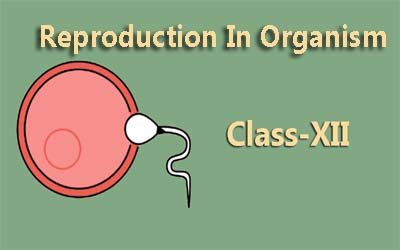Course description
The Plant Kingdom is a fascinating and essential part of life on Earth. This Class 11 Biology unit dives into the world of plants, exploring their diversity, structure, function, and significance for our planet.
Here's a breakdown of the key concepts you'll encounter:
Characteristics of Plants: This section lays the foundation by defining what makes a plant a plant. You'll learn about their multicellular eukaryotic structure, cell walls made of cellulose, and their primary mode of nutrition - photosynthesis.
Diversity in the Plant Kingdom: Get ready to discover the incredible variety of plant life! This section explores different plant groups based on classification systems. Some common categories you might encounter include:
Bryophytes (non-vascular plants): Mosses, liverworts, and hornworts. These lack vascular tissue and require a moist environment.
Pteridophytes (vascular plants with spores): Ferns, horsetails, and club mosses. These have vascular tissue for transport but reproduce using spores instead of seeds.
Gymnosperms (cone-bearing plants): Pines, firs, and cycads. These are seed plants with naked seeds (not enclosed in an ovary).
Angiosperms (flowering plants): The most diverse group, including all flowering plants like roses, grasses, and cacti. These have seeds enclosed in fruits.
Plant Structure and Function: This section delves deeper into the internal workings of plants. You'll explore the structure and function of various organs and tissues:
Roots: Absorption of water and minerals.
Stems: Support, transport, and storage.
Leaves: Photosynthesis, transpiration, and gas exchange.
Vascular tissues: Xylem (water and mineral transport) and phloem (sugar transport).
Plant Reproduction: Plants have fascinating ways to reproduce! You'll learn about both sexual and asexual reproduction methods:
Sexual reproduction: Involves the fusion of male and female gametes (sperm and egg) to produce seeds or spores. Flowers play a crucial role in sexual reproduction of angiosperms.
Asexual reproduction: Occurs without the fusion of gametes. Examples include vegetative propagation (taking cuttings) and runners/stolons.
Importance of Plants in the Biosphere: Plants are the foundation of life on Earth! This section explores their vital ecological roles:
Producers: Through photosynthesis, they provide the base of most food chains.
Oxygen production: Release oxygen essential for respiration in animals and humans.
Climate regulation: Absorb carbon dioxide, a greenhouse gas, helping regulate climate.
Soil conservation: Anchor the soil with their roots, preventing erosion.
Beyond these core concepts, your course might delve into:
Plant Adaptations: Explore how plants have adapted to survive in various environments, like deserts, rainforests, and aquatic habitats.
Plant Responses: Learn how plants, despite being immobile, can sense and respond to stimuli in their environment (e.g., light, touch).
Economic Importance of Plants: Understand the role of plants in agriculture, forestry, and providing raw materials for various industries.
Threats to Plants: Explore challenges faced by plants today, including deforestation, climate change, and invasive species.
উদ্ভিদ সাম্রাজ্য পৃথিবীর জীবনের একটি আকর্ষণীয় এবং অপরিহার্য অংশ। এই ক্লাস 11 জীববিজ্ঞান ইউনিট উদ্ভিদের জগতে ডুব দেয়, তাদের বৈচিত্র্য, কাঠামো, কার্যকারিতা এবং আমাদের গ্রহের জন্য তাৎপর্য অন্বেষণ করে।
আপনি যে মূল ধারণাগুলির মুখোমুখি হবেন সেগুলির একটি ভাঙ্গন এখানে দেওয়া হলঃ
উদ্ভিদের বৈশিষ্ট্যঃ এই বিভাগটি একটি উদ্ভিদকে কী উদ্ভিদ করে তোলে তা সংজ্ঞায়িত করে ভিত্তি স্থাপন করে। আপনি তাদের বহুকোষী ইউক্যারিওটিক কাঠামো, সেলুলোজ দিয়ে তৈরি কোষ প্রাচীর এবং তাদের পুষ্টির প্রাথমিক পদ্ধতি-সালোকসংশ্লেষণ সম্পর্কে শিখবেন।
উদ্ভিদ জগতে বৈচিত্র্যঃ উদ্ভিদ জীবনের অবিশ্বাস্য বৈচিত্র্য আবিষ্কার করার জন্য প্রস্তুত হন! এই বিভাগটি শ্রেণীবিভাগ পদ্ধতির উপর ভিত্তি করে বিভিন্ন উদ্ভিদ গোষ্ঠীর অন্বেষণ করে। আপনার সম্মুখীন হতে পারে এমন কিছু সাধারণ বিভাগের মধ্যে রয়েছেঃ
ব্রায়োফাইট (অ-ভাস্কুলার উদ্ভিদ) মস, লিভারওয়র্টস এবং হর্নওয়র্টস। এগুলিতে ভাস্কুলার টিস্যুর অভাব থাকে এবং একটি আর্দ্র পরিবেশের প্রয়োজন হয়।
টেরিডোফাইট (স্পোর সহ ভাস্কুলার উদ্ভিদ) ফার্ন, ঘোড়ার লেজ এবং ক্লাব শসা। এগুলিতে পরিবহনের জন্য ভাস্কুলার টিস্যু রয়েছে তবে বীজের পরিবর্তে স্পোর ব্যবহার করে প্রজনন করে।
জিমনোস্পার্ম (শঙ্কু বহনকারী উদ্ভিদ) পাইন, ফার এবং সাইক্যাড। এগুলি নগ্ন বীজ সহ বীজ উদ্ভিদ। (not enclosed in an ovary).
অ্যাঞ্জিওস্পার্ম (সপুষ্পক উদ্ভিদ) গোলাপ, ঘাস এবং ক্যাকটির মতো সমস্ত সপুষ্পক উদ্ভিদ সহ সবচেয়ে বৈচিত্র্যময় গোষ্ঠী। এগুলির বীজ ফলের মধ্যে আবদ্ধ থাকে।
উদ্ভিদের গঠন ও কার্যাবলীঃ এই বিভাগটি উদ্ভিদের অভ্যন্তরীণ ক্রিয়াকলাপ সম্পর্কে আরও গভীরভাবে অনুসন্ধান করে। আপনি বিভিন্ন অঙ্গ এবং টিস্যুর গঠন এবং কার্যকারিতা অন্বেষণ করবেনঃ
শিকড়ঃ জল ও খনিজ পদার্থের শোষণ।
কান্ডঃ সহায়তা, পরিবহন এবং সঞ্চয়।
পাতাঃ সালোকসংশ্লেষণ, বাষ্পীভবন এবং গ্যাস বিনিময়।
ভাস্কুলার টিস্যুঃ জাইলেম (জল এবং খনিজ পরিবহন) এবং ফ্লোয়েম (sugar transport).
উদ্ভিদের পুনরুত্পাদনঃ উদ্ভিদের পুনরুত্পাদন করার আকর্ষণীয় উপায় রয়েছে! আপনি যৌন এবং অযৌন প্রজনন পদ্ধতি সম্পর্কে শিখবেনঃ
যৌন প্রজননঃ বীজ বা বীজাণু উৎপাদনের জন্য পুরুষ এবং মহিলা গ্যামেটের (শুক্রাণু এবং ডিম) সংমিশ্রণ জড়িত। ফুল অ্যাঞ্জিওস্পার্মের যৌন প্রজননে গুরুত্বপূর্ণ ভূমিকা পালন করে।
অযৌন প্রজননঃ গ্যামেটের সংমিশ্রণ ছাড়াই ঘটে। উদাহরণের মধ্যে রয়েছে উদ্ভিজ্জ বিস্তার (কাটা) এবং রানার/স্টোলন।
জীবমণ্ডলে উদ্ভিদের গুরুত্বঃ গাছপালা পৃথিবীতে জীবনের ভিত্তি! এই বিভাগটি তাদের গুরুত্বপূর্ণ পরিবেশগত ভূমিকা অন্বেষণ করেঃ
প্রযোজকঃ সালোকসংশ্লেষণের মাধ্যমে, তারা বেশিরভাগ খাদ্য শৃঙ্খলের ভিত্তি সরবরাহ করে।
অক্সিজেন উৎপাদনঃ প্রাণী ও মানুষের শ্বাস-প্রশ্বাসের জন্য প্রয়োজনীয় অক্সিজেন ছেড়ে দেয়।
জলবায়ু নিয়ন্ত্রণঃ কার্বন ডাই অক্সাইড, একটি গ্রিনহাউস গ্যাস শোষণ করে, যা জলবায়ু নিয়ন্ত্রণে সহায়তা করে।
মাটি সংরক্ষণঃ মাটি তাদের শিকড় দিয়ে নোঙর করুন, ক্ষয় রোধ করুন।
এই মূল ধারণাগুলির বাইরে, আপনার কোর্সটি নিম্নলিখিত বিষয়গুলিতে গভীরভাবে অধ্যয়ন করতে পারেঃ
উদ্ভিদ অভিযোজনঃ মরুভূমি, রেইন ফরেস্ট এবং জলজ আবাসস্থলের মতো বিভিন্ন পরিবেশে বেঁচে থাকার জন্য গাছপালা কীভাবে অভিযোজিত হয়েছে তা অন্বেষণ করুন।
উদ্ভিদের প্রতিক্রিয়াঃ জেনে নিন কিভাবে উদ্ভিদ, অচল হওয়া সত্ত্বেও, তাদের পরিবেশে উদ্দীপনার অনুভূতি এবং প্রতিক্রিয়া করতে পারে (e.g., light, touch).
উদ্ভিদের অর্থনৈতিক গুরুত্বঃ কৃষি, বনায়ন এবং বিভিন্ন শিল্পের জন্য কাঁচামাল সরবরাহে উদ্ভিদের ভূমিকা বুঝুন।
উদ্ভিদের জন্য হুমকিঃ বন উজাড়, জলবায়ু পরিবর্তন এবং আক্রমণাত্মক প্রজাতি সহ আজ উদ্ভিদের সম্মুখীন হওয়া চ্যালেঞ্জগুলি অন্বেষণ করুন।



















